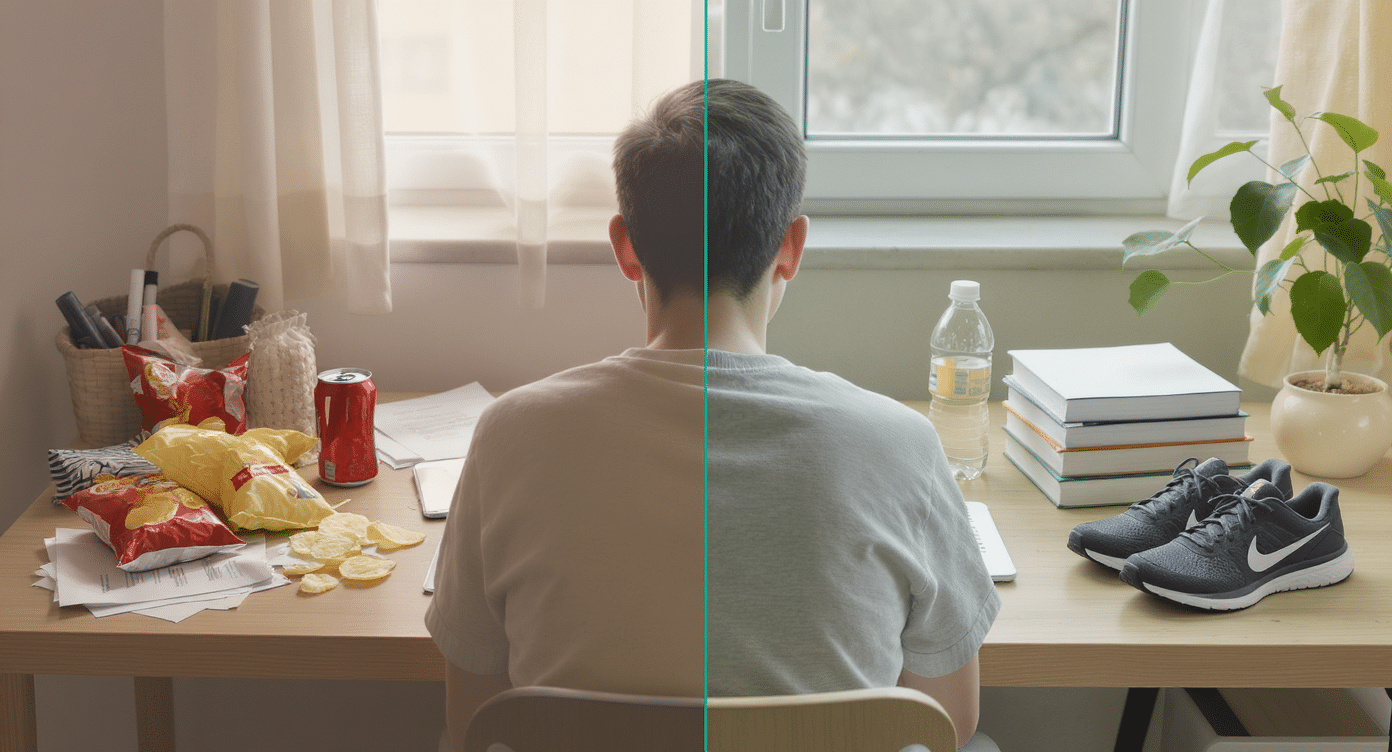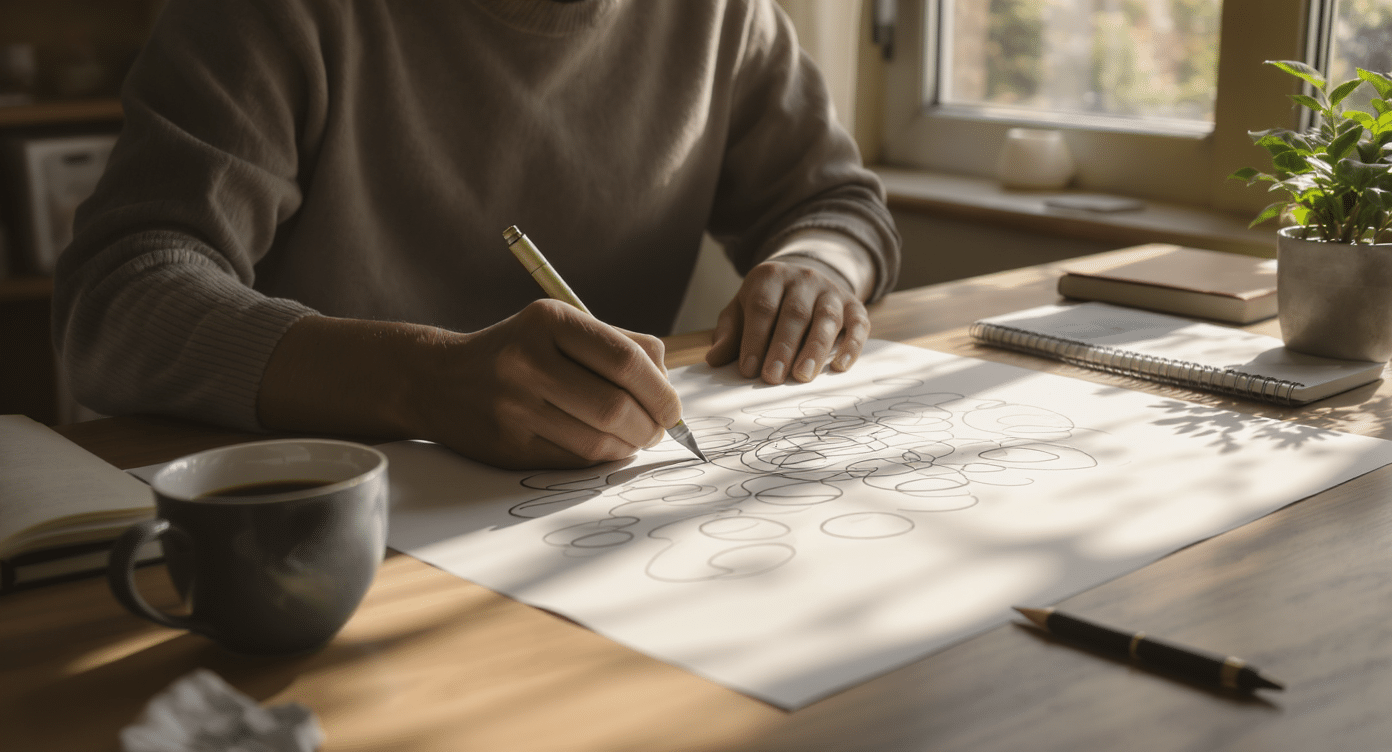The psychology of habits explains why daily routines often feel automatic and difficult to change.
Each habit you develop is rooted in a loop consisting of a cue that triggers behavior, the routine that follows, and the reward that reinforces it.
Over time, these loops become wired into your brain, making them resistant to change.
Yet, with consistent effort, unhelpful patterns can be replaced by healthier ones. From productivity and fitness to money management and relationships, habits influence nearly every aspect of life.
By learning more about the psychology of habits, you gain the tools to redesign routines and create a lifestyle aligned with your goals.
Habits and How They Shape Us
People’s daily routines control more of their lives than they realize. These automatic behaviors guide their choices and actions. They create the foundation for who people become over time.
Every morning, millions of people wake up and follow the same pattern. They reach for their phones, brush their teeth, and make coffee.
These small actions seem simple, but they build momentum for entire days. Habits work like invisible threads that connect past decisions to future outcomes.
When people repeat behaviors, their brains create neural pathways. These pathways become stronger with each repetition.
Soon, these actions will require less mental energy to perform. Human minds appreciate this efficiency because it frees up cognitive resources for more complex tasks.
The power of habits extends beyond personal routines. They influence relationships, career progress, and overall well-being.
Good habits compound over time, creating positive results. Bad habits also compound, but they lead people away from their goals. Understanding this process helps individuals take control of their automatic behaviors.
Psychology of Habits

The science behind habit formation reveals fascinating insights about human behavior. Human brains are wired to create these automatic responses as survival mechanisms. The key psychological concepts that drive habit formation deserve closer examination.
The Habit Loop Structure
Every habit follows a three-part cycle that psychologists call the habit loop. This loop consists of a cue, routine, and reward. The cue triggers the behavior, the routine is the action itself, and the reward satisfies a craving.
For example, when someone feels stressed at work (cue), they might check social media (routine) to feel connected and entertained (reward). This cycle repeats until checking phones becomes automatic whenever stress appears.
- Cue identification: Environmental triggers that start the habit cycle
- Routine execution: The actual behavior or action performed
- Reward satisfaction: The benefit or feeling gained from the action
- Craving development: The anticipation of the reward that drives the behavior
Neuroplasticity and Habit Formation
The human brain physically changes when people form habits. The basal ganglia, a cluster of brain structures, takes over automatic behaviors. This process frees up the prefrontal cortex for tasks that require decision-making.
When people first learn a new behavior, their entire brain activates. As the action becomes habitual, only specific brain regions stay active. This shift explains why habits often feel effortless once they are established.
- Brain efficiency: Habits reduce the mental energy required for routine tasks
- Neural pathway strength: Repeated behaviors create stronger brain connections
- Automatic processing: Established habits bypass conscious decision-making
- Memory consolidation: Regular practice moves behaviors from conscious to unconscious memory
Environmental and Social Triggers
Context plays a huge role in habit activation. Certain locations, times, or social situations can trigger specific behaviors. People eat more snacks when watching TV because their brains associate couches with food.
Social environments also shape habits. When surrounded by people who exercise regularly, individuals are more likely to develop fitness routines. This social influence happens without conscious awareness.
- Location-based triggers: Specific places that activate certain behaviors
- Time-dependent cues: Scheduled moments that prompt habitual actions
- Social modeling: Learning behaviors by observing others
- Cultural reinforcement: Society’s approval or disapproval of certain habits
Habit Formation and Reinforcement
Understanding how habits form and strengthen helps people build better routines. The process involves specific psychological mechanisms that individuals can learn to influence. Here’s a detailed breakdown of the key components:
| Formation Stage | Process | Timeline | Key Factor |
|---|---|---|---|
| Initial Learning | Conscious effort required for new behavior | Days 1-7 | High motivation and focus |
| Pattern Recognition | Brain begins to identify triggers and rewards | Days 8-30 | Consistent repetition |
| Automatic Response | Behavior becomes less conscious | Days 31-66 | Environmental cues strengthen |
| Full Integration | Habit feels natural and effortless | 66+ days | Neural pathways fully formed |
| Maintenance Phase | Behavior continues with minimal effort | Ongoing | Regular reinforcement |
Breaking Unhelpful Patterns

Changing unwanted behaviors requires understanding the psychology of habits and applying specific strategies. The key is interrupting the automatic cycle while replacing it with healthier alternatives.
- Identify Triggers: People should write down when, where, and why they perform unwanted behaviors. They need to look for patterns in emotions, environment, and social situations. This awareness is the first step toward change.
- Replace, Don’t Remove: Instead of trying to eliminate habits completely, individuals should substitute healthier behaviors. If someone stress-eats cookies, they can try eating fruit or doing jumping jacks when stress hits.
- Change Environment: People should remove cues that trigger unwanted behaviors. If someone wants to stop checking their phone constantly, they should put it in another room. Environmental design makes good choices easier and bad choices harder.
- Use Implementation Intentions: Individuals can create specific if-then plans for challenging situations. “If someone feels anxious at 3 PM, then they will take five deep breaths instead of reaching for candy.”
- Track Progress: People should monitor their behavior changes through journaling or apps. Seeing improvement provides motivation and helps identify what strategies work best for each person.
Sustaining Helpful Routines
Building lasting positive habits requires more than initial motivation. Consistency matters more than perfection in creating sustainable routines. Life will challenge these behaviors regularly.
People should start small with new habits. Instead of hour-long workouts, they can begin with five-minute walks. Small wins build confidence and momentum.
The human brain needs time to adapt without feeling overwhelmed.
Individuals can create habit stacks by linking new behaviors to existing ones. After pouring morning coffee, someone can write three gratitude notes. This connection makes habits easier to remember.
These changes reduce friction for good behaviors.
Everyone should prepare for setbacks. Life will interrupt routines sometimes. Instead of giving up, people need restart plans. Missing one day doesn’t ruin progress.
Wrapping It Up
Knowing the psychology of habits reveals how much control you have over lasting change.
Although routines often form unconsciously, awareness makes it possible to interrupt negative cycles.
By introducing new cues, stacking helpful behaviors, or tracking progress, you create sustainable systems.
Breaking old patterns is rarely easy, but persistence and planning pay off over time.
Positive habits compound into stronger health, improved focus, and better outcomes in many areas of life.
Recognizing the psychology of habits empowers you to take small steps that lead to lasting progress and a more intentional, balanced daily experience.





































